-
 Bitcoin
Bitcoin $83,218.0125
-2.60% -
 Ethereum
Ethereum $1,586.4638
-3.87% -
 Tether USDt
Tether USDt $0.9996
-0.01% -
 XRP
XRP $2.0896
-3.40% -
 BNB
BNB $582.4772
-2.57% -
 Solana
Solana $127.0813
-4.36% -
 USDC
USDC $0.9999
0.00% -
 Dogecoin
Dogecoin $0.1619
-4.07% -
 TRON
TRON $0.2526
2.38% -
 Cardano
Cardano $0.6319
-4.54% -
 UNUS SED LEO
UNUS SED LEO $9.3069
-0.12% -
 Chainlink
Chainlink $12.4967
-5.42% -
 Avalanche
Avalanche $19.4394
-5.00% -
 Stellar
Stellar $0.2352
-4.53% -
 Sui
Sui $2.2092
-7.00% -
 Shiba Inu
Shiba Inu $0.0...01198
-4.71% -
 Toncoin
Toncoin $2.8160
-6.87% -
 Hedera
Hedera $0.1644
-6.43% -
 Bitcoin Cash
Bitcoin Cash $342.1859
-0.86% -
 Litecoin
Litecoin $77.0418
-2.30% -
 Polkadot
Polkadot $3.6299
-2.85% -
 Dai
Dai $1.0000
-0.02% -
 Bitget Token
Bitget Token $4.2733
-3.34% -
 Hyperliquid
Hyperliquid $15.0467
-9.01% -
 Pi
Pi $0.7284
-1.41% -
 Ethena USDe
Ethena USDe $0.9989
-0.01% -
 Monero
Monero $202.5557
-2.26% -
 Uniswap
Uniswap $5.2896
-4.24% -
 OKB
OKB $52.8982
-1.52% -
 Pepe
Pepe $0.0...07146
-4.33%
What factors affect the bid-ask spread of a Bitcoin ETF?
The bid-ask spread of a Bitcoin ETF is influenced by market liquidity, volatility, market maker activity, order size, regulatory environment, trading hours, underlying asset price, and market sentiment.
Apr 08, 2025 at 08:50 pm

The bid-ask spread of a Bitcoin Exchange Traded Fund (ETF) is a critical metric that investors and traders closely monitor. It represents the difference between the highest price a buyer is willing to pay (bid) and the lowest price a seller is willing to accept (ask). Several factors influence this spread, and understanding them can help investors make more informed decisions. In this article, we will explore the key factors that affect the bid-ask spread of a Bitcoin ETF.
Market Liquidity
Market liquidity is one of the primary factors affecting the bid-ask spread of a Bitcoin ETF. Liquidity refers to the ease with which an asset can be bought or sold in the market without significantly affecting its price. A highly liquid market typically has a narrow bid-ask spread, while a less liquid market has a wider spread.
In the context of a Bitcoin ETF, liquidity is influenced by the trading volume of the ETF itself and the underlying Bitcoin market. If the ETF experiences high trading volumes, it indicates a robust market with many participants, which generally leads to a tighter spread. Conversely, low trading volumes can result in a wider spread due to fewer market participants.
Volatility
Volatility in the Bitcoin market can significantly impact the bid-ask spread of a Bitcoin ETF. Volatility refers to the degree of variation in trading prices over time. High volatility often leads to wider bid-ask spreads because market makers and liquidity providers need to account for the increased risk of price fluctuations.
When Bitcoin prices are highly volatile, market makers may widen the spread to protect themselves from potential losses due to rapid price changes. This is because they need to ensure they can still make a profit even if the price moves against them between the time they buy and sell the ETF shares.
Market Maker Activity
Market maker activity plays a crucial role in determining the bid-ask spread of a Bitcoin ETF. Market makers are entities that provide liquidity to the market by continuously quoting both a buy and a sell price for an asset. Their presence helps to narrow the spread by ensuring there are always buyers and sellers available.
The number of market makers and their competitiveness can influence the spread. If there are many market makers competing to provide the best prices, the spread will likely be narrower. However, if there are fewer market makers or if they are less competitive, the spread may widen.
Order Size
Order size is another factor that can affect the bid-ask spread of a Bitcoin ETF. Larger orders can have a more significant impact on the market, potentially leading to wider spreads. When a large order is placed, it may not be possible to fill it entirely at the current bid or ask price, causing the price to move and the spread to widen.
For example, if an investor wants to buy a large number of shares of a Bitcoin ETF, the market may need to adjust the ask price higher to attract more sellers, resulting in a wider spread. Conversely, smaller orders are less likely to move the market significantly, leading to narrower spreads.
Regulatory Environment
The regulatory environment surrounding Bitcoin and ETFs can also influence the bid-ask spread. Regulations can affect the overall market sentiment and the willingness of market participants to engage in trading activities.
For instance, if there are stringent regulations that make it difficult for market makers to operate, the spread may widen due to reduced liquidity. On the other hand, a favorable regulatory environment that encourages market participation can lead to narrower spreads.
Trading Hours and Time of Day
Trading hours and the time of day can impact the bid-ask spread of a Bitcoin ETF. Trading volumes and liquidity can vary significantly throughout the day, affecting the spread.
During peak trading hours, when more investors are active, the spread tends to be narrower due to higher liquidity. Conversely, during off-peak hours, such as early morning or late evening, the spread may widen as fewer market participants are trading.
Underlying Asset Price
The price of the underlying asset, in this case, Bitcoin, can also influence the bid-ask spread of a Bitcoin ETF. When Bitcoin prices are high, the spread may widen due to increased volatility and risk. Conversely, when Bitcoin prices are low, the spread may narrow as the market becomes less volatile.
Additionally, significant price movements in Bitcoin can lead to wider spreads as market makers adjust their quotes to account for the increased risk of holding the asset.
Market Sentiment
Market sentiment plays a role in determining the bid-ask spread of a Bitcoin ETF. Positive sentiment can lead to increased trading activity and narrower spreads, while negative sentiment can result in reduced trading and wider spreads.
For example, if there is positive news about Bitcoin or the ETF, more investors may be willing to buy, leading to higher liquidity and a narrower spread. Conversely, negative news can cause investors to sell, reducing liquidity and widening the spread.
Frequently Asked Questions
Q: How can investors minimize the impact of a wide bid-ask spread when trading a Bitcoin ETF?
A: Investors can minimize the impact of a wide bid-ask spread by trading during peak hours when liquidity is higher, using limit orders to control the price at which they buy or sell, and diversifying their investments to reduce the impact of any single trade.
Q: Can the bid-ask spread of a Bitcoin ETF be used as an indicator of market health?
A: Yes, the bid-ask spread can be used as an indicator of market health. A narrow spread typically indicates a healthy, liquid market, while a wide spread may suggest lower liquidity and higher risk.
Q: How do different types of Bitcoin ETFs affect the bid-ask spread?
A: Different types of Bitcoin ETFs, such as physically-backed or futures-based ETFs, can have varying impacts on the bid-ask spread. Physically-backed ETFs may have narrower spreads due to direct exposure to Bitcoin, while futures-based ETFs may have wider spreads due to the additional complexity and risk involved in futures contracts.
Q: What role do institutional investors play in the bid-ask spread of a Bitcoin ETF?
A: Institutional investors can significantly influence the bid-ask spread of a Bitcoin ETF. Their large trades can impact liquidity and volatility, potentially leading to wider spreads. However, their participation can also increase overall market liquidity, which may help narrow the spread over time.
Disclaimer:info@kdj.com
The information provided is not trading advice. kdj.com does not assume any responsibility for any investments made based on the information provided in this article. Cryptocurrencies are highly volatile and it is highly recommended that you invest with caution after thorough research!
If you believe that the content used on this website infringes your copyright, please contact us immediately (info@kdj.com) and we will delete it promptly.
- BetMGM Bonus Code CUSE150: Unlock $150 or $1500 First Bet Match
- 2025-04-14 06:35:13
- Fartcoin (FART) Cryptocurrency Surges 84% as Market Turbulence Reaches New Heights
- 2025-04-14 06:35:13
- Bryce Paul Reviews His #1 AI Crypto Pick That Could Outpace Even Nvidia's Explosive Run in 2025
- 2025-04-14 06:30:13
- Mantra Tokens Crash, $5 Billion Wiped Off
- 2025-04-14 06:30:13
- Mantra, Once a Beacon of Hope in RWA Tokenization, Collapses Overnight, Losing 90% of Its Market Cap
- 2025-04-14 06:25:12
- Here's Why Mantra (OM) Price Crashed 90%
- 2025-04-14 06:25:12
Related knowledge
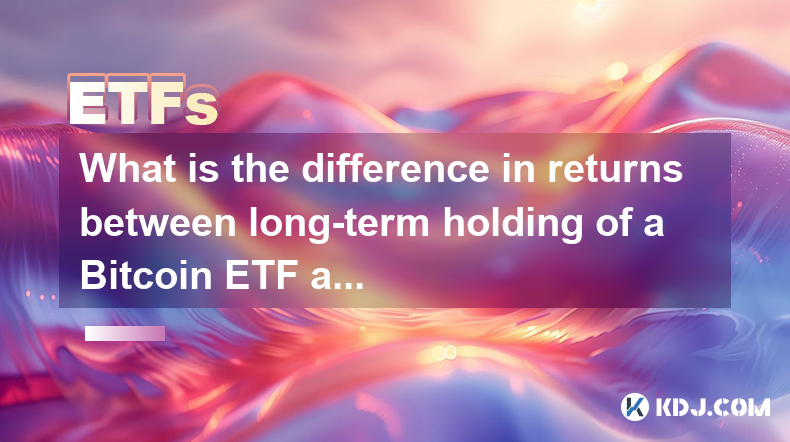
What is the difference in returns between long-term holding of a Bitcoin ETF and holding Bitcoin directly?
Apr 09,2025 at 04:15am
When considering the difference in returns between long-term holding of a Bitcoin ETF and holding Bitcoin directly, it's essential to understand the nuances and factors that affect each investment option. Both approaches have their unique advantages and potential drawbacks, which can significantly impact the overall returns over time. Understanding Bitc...
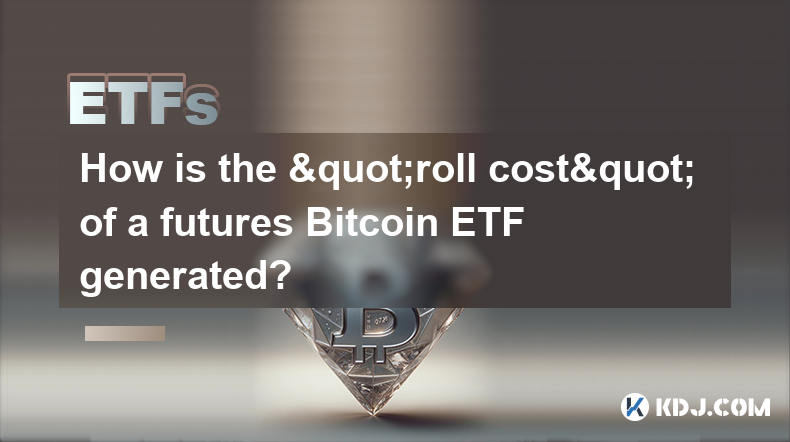
How is the "roll cost" of a futures Bitcoin ETF generated?
Apr 08,2025 at 01:22pm
The 'roll cost' of a futures Bitcoin ETF is a critical concept for investors to understand, as it directly impacts the performance of the ETF. In this article, we will delve into the mechanics of how the roll cost is generated, exploring the underlying processes and factors that contribute to this cost. Understanding Futures ContractsFutures contracts a...
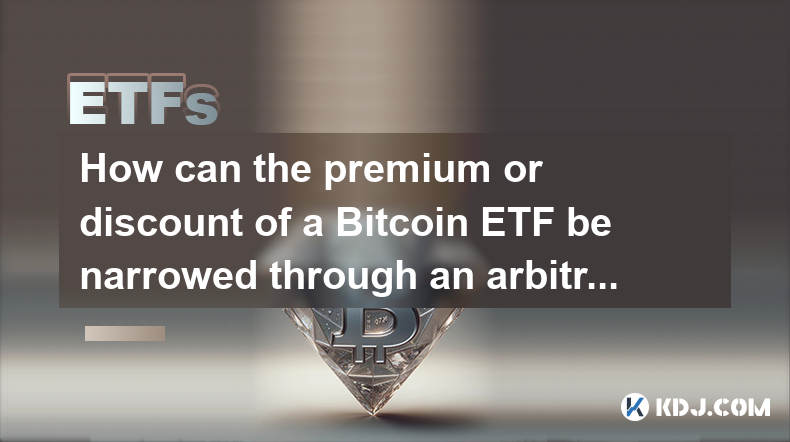
How can the premium or discount of a Bitcoin ETF be narrowed through an arbitrage mechanism?
Apr 09,2025 at 12:07am
Arbitrage mechanisms play a crucial role in narrowing the premium or discount of a Bitcoin Exchange Traded Fund (ETF). Understanding how these mechanisms work can provide valuable insights into the dynamics of Bitcoin ETFs and their relationship with the underlying asset. This article will delve into the specifics of how arbitrage can be used to align t...

What factors affect the bid-ask spread of a Bitcoin ETF?
Apr 08,2025 at 08:50pm
The bid-ask spread of a Bitcoin Exchange Traded Fund (ETF) is a critical metric that investors and traders closely monitor. It represents the difference between the highest price a buyer is willing to pay (bid) and the lowest price a seller is willing to accept (ask). Several factors influence this spread, and understanding them can help investors make ...
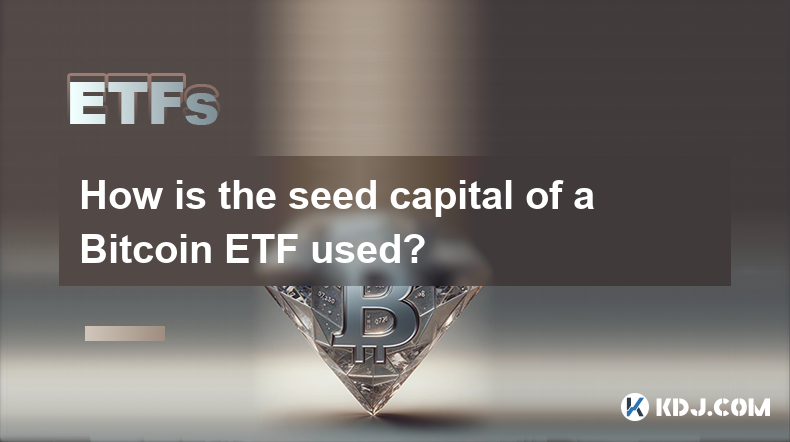
How is the seed capital of a Bitcoin ETF used?
Apr 10,2025 at 02:15pm
The seed capital of a Bitcoin ETF plays a crucial role in the establishment and operation of the fund. This initial investment is used to create the fund's underlying assets, manage operational costs, and ensure the ETF can start trading on an exchange. Understanding how this seed capital is utilized provides insight into the mechanics of Bitcoin ETFs a...
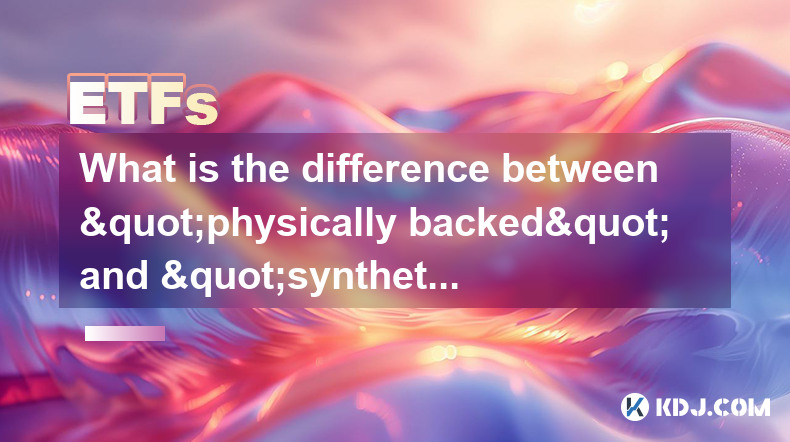
What is the difference between "physically backed" and "synthetic" Bitcoin ETFs in terms of holding assets?
Apr 10,2025 at 04:56pm
Bitcoin Exchange Traded Funds (ETFs) have become a popular way for investors to gain exposure to the cryptocurrency market without directly owning the underlying asset. There are two primary types of Bitcoin ETFs: physically backed and synthetic. Understanding the differences between these two types, particularly in terms of how they hold assets, is cru...

What is the difference in returns between long-term holding of a Bitcoin ETF and holding Bitcoin directly?
Apr 09,2025 at 04:15am
When considering the difference in returns between long-term holding of a Bitcoin ETF and holding Bitcoin directly, it's essential to understand the nuances and factors that affect each investment option. Both approaches have their unique advantages and potential drawbacks, which can significantly impact the overall returns over time. Understanding Bitc...

How is the "roll cost" of a futures Bitcoin ETF generated?
Apr 08,2025 at 01:22pm
The 'roll cost' of a futures Bitcoin ETF is a critical concept for investors to understand, as it directly impacts the performance of the ETF. In this article, we will delve into the mechanics of how the roll cost is generated, exploring the underlying processes and factors that contribute to this cost. Understanding Futures ContractsFutures contracts a...

How can the premium or discount of a Bitcoin ETF be narrowed through an arbitrage mechanism?
Apr 09,2025 at 12:07am
Arbitrage mechanisms play a crucial role in narrowing the premium or discount of a Bitcoin Exchange Traded Fund (ETF). Understanding how these mechanisms work can provide valuable insights into the dynamics of Bitcoin ETFs and their relationship with the underlying asset. This article will delve into the specifics of how arbitrage can be used to align t...

What factors affect the bid-ask spread of a Bitcoin ETF?
Apr 08,2025 at 08:50pm
The bid-ask spread of a Bitcoin Exchange Traded Fund (ETF) is a critical metric that investors and traders closely monitor. It represents the difference between the highest price a buyer is willing to pay (bid) and the lowest price a seller is willing to accept (ask). Several factors influence this spread, and understanding them can help investors make ...

How is the seed capital of a Bitcoin ETF used?
Apr 10,2025 at 02:15pm
The seed capital of a Bitcoin ETF plays a crucial role in the establishment and operation of the fund. This initial investment is used to create the fund's underlying assets, manage operational costs, and ensure the ETF can start trading on an exchange. Understanding how this seed capital is utilized provides insight into the mechanics of Bitcoin ETFs a...

What is the difference between "physically backed" and "synthetic" Bitcoin ETFs in terms of holding assets?
Apr 10,2025 at 04:56pm
Bitcoin Exchange Traded Funds (ETFs) have become a popular way for investors to gain exposure to the cryptocurrency market without directly owning the underlying asset. There are two primary types of Bitcoin ETFs: physically backed and synthetic. Understanding the differences between these two types, particularly in terms of how they hold assets, is cru...
See all articles























































































